Welcome to one of the most active flamenco sites on the Internet. Guests can read most posts but if you want to participate click here to register.
This site is dedicated to the memory of Paco de Lucía, Ron Mitchell, Guy Williams, Linda Elvira, Philip John Lee, Craig Eros, Ben Woods, David Serva and Tom Blackshear who went ahead of us.
We receive 12,200 visitors a month from 200 countries and 1.7 million page impressions a year. To advertise on this site please contact us.
|

|
|
RE: Gitanos in XVI-XVIIIth centuries: anti-gypsy measures, privileges, and a confluence of circumstances
|
You are logged in as Guest
|
|
Users viewing this topic: none
|
|
Login  | |
|

   
Ricardo
Posts: 14801
Joined: Dec. 14 2004
From: Washington DC

|
 RE: Gitanos in XVI-XVIIIth centuries... (in reply to kitarist) RE: Gitanos in XVI-XVIIIth centuries... (in reply to kitarist)
|
|
|
quote:
ORIGINAL: kitarist
Hmm, what's 'Tango Americano' doing there at the beginning of the 19th century; this makes no sense - neither timing nor musical ancestry. Unless 'tango Americano' means to Nunez something completely different from what I am thinking.
Referring probably to African communities in South America…and an interesting word association: Tango=Tambo
From wiki:
quote:
Rodríguez Molas cita una denuncia de 1789, realizada por Manuel Warnes (entonces funcionario del cabildo de Buenos Aires), en la que se usa la palabra "tango" para referirse a las reuniones bailables de los esclavos:
No permitan semejantes bailes y juntas las del tango, porque en ellas no se trata sino del robo y de la intranquilidad para vivir los negros con libertad y sacudir el yugo de la esclavitud.1618
En Montevideo, en aquella época, la palabra "tango" se utilizaba con un significado similar. El musicólogo uruguayo Lauro Ayestarán citaba en su fundacional obra La música del Uruguay la resolución del Cabildo de Montevideo del 26 de septiembre de 1807 dictada con acuerdo del gobernador Francisco Javier de Elio:
Sobre tambos, bailes de negros. Que respecto a los bailes de negros, son por todos motivos perjudiciales se prohivan absolutamente, dentro y fuera de la Ciudad, y que se imponga al que contrabenga el castigo de un mes á las obras públicas.
Resolución del Cabildo de Montevideo
de común acuerdo con el gobernador Francisco Javier Elío del 26 de septiembre de 180719
For the record Tiento is an older term, I think equivalent of “prelude” in 1500’s. Check out Antonio Cabezon etc.
_____________________________
CD's and transcriptions available here:
www.ricardomarlow.com
|
|
|
|
REPORT THIS POST AS INAPPROPRIATE |
Date Mar. 29 2022 16:40:02
 |
|

   
kitarist
Posts: 1715
Joined: Dec. 4 2012

|
 RE: Gitanos in XVI-XVIIIth centuries... (in reply to Ricardo) RE: Gitanos in XVI-XVIIIth centuries... (in reply to Ricardo)
|
|
|
quote:
ORIGINAL: Ricardo
quote:
ORIGINAL: kitarist
Hmm, what's 'Tango Americano' doing there at the beginning of the 19th century; this makes no sense - neither timing nor musical ancestry. Unless 'tango Americano' means to Nunez something completely different from what I am thinking.
Referring probably to African communities in South America…and an interesting word association: Tango=Tambo
From wiki:
quote:
Rodríguez Molas cita una denuncia de 1789, realizada por Manuel Warnes (entonces funcionario del cabildo de Buenos Aires), en la que se usa la palabra "tango" para referirse a las reuniones bailables de los esclavos:
No permitan semejantes bailes y juntas las del tango, porque en ellas no se trata sino del robo y de la intranquilidad para vivir los negros con libertad y sacudir el yugo de la esclavitud.1618
En Montevideo, en aquella época, la palabra "tango" se utilizaba con un significado similar. El musicólogo uruguayo Lauro Ayestarán citaba en su fundacional obra La música del Uruguay la resolución del Cabildo de Montevideo del 26 de septiembre de 1807 dictada con acuerdo del gobernador Francisco Javier de Elio:
Sobre tambos, bailes de negros. Que respecto a los bailes de negros, son por todos motivos perjudiciales se prohivan absolutamente, dentro y fuera de la Ciudad, y que se imponga al que contrabenga el castigo de un mes á las obras públicas.
Resolución del Cabildo de Montevideo
de común acuerdo con el gobernador Francisco Javier Elío del 26 de septiembre de 180719
Thanks. Yeah, this above is about the possible origin of the word though (to label something taking shape almost a century later). I don't see the musical connection to tanguillo. Word associations are very weak evidence of anything, if evidence at all, as you know from the linguistic arguments for this or that flamenco palo that ignore musical clues.
Also, 'African tango', sure (percussion-based; tambo is a drum), but to call that, at the end of the 1700s, 'Tango Americano' (Tango Argentino by another name a century later) seems ambitious. Add to that that before the 1920s the rhythmic and ostinato elements of the music of 'tango' were very different. Both pre- and post- are nothing like a tanguillo, though. I can see the rhythmic connection of tanguillo to cocoye, I guess.
_____________________________
Konstantin
|
|
|
|
REPORT THIS POST AS INAPPROPRIATE |
Date Mar. 29 2022 17:16:26
 |
|

   
Steelhead
Posts: 89
Joined: Nov. 20 2014

|
 RE: Gitanos in XVI-XVIIIth centuries... (in reply to Ricardo) RE: Gitanos in XVI-XVIIIth centuries... (in reply to Ricardo)
|
|
|
There are references to "tango americano" and "tango negro" from 1799 in Spain. But a problem I have with the flamencologists who repeat that the flamenco tango came from an Afro-Cuban namesake is that there is no evidence that "tango" ever denoted a specific musical genre in Cuba. E.g., Pichardo's 1836 Cuban dictionary defines it as a "gathering of bozal negros to dance to drums and other instruments." So maybe some costumbrista Cádiz Carnival groups did what they called tango, to some duple-metered songs, with the familiar contradanza/"habanera" rhythm, then it went to the zarzuelas etc... Even then, it has always been my humble opinion that the flamenco tango is so different--in rhythm, tonality, melodies, vocal style etc... from anything in Cuba that it is a bit of a stretch to call it a cante de ida y vuelta. Faustino has the opposite interpretation, i.e., "It's totally Cuban, except for the rhythm, the tonality, the melodies, the style..." (Cf, "Life of Brian": "The Romans have been here in Palestine for a century and what have they given us? NOTHING!, except for the aqueduct, schools, legal system, law and order, currency, trade networks...")
_____________________________
Steelhead
|
|
|
|
REPORT THIS POST AS INAPPROPRIATE |
Date Mar. 30 2022 13:31:10
 |
|

   
Ricardo
Posts: 14801
Joined: Dec. 14 2004
From: Washington DC

|
 RE: Gitanos in XVI-XVIIIth centuries... (in reply to Steelhead) RE: Gitanos in XVI-XVIIIth centuries... (in reply to Steelhead)
|
|
|
Agreed to the above. The only thing, at a glance, I am sort of ok with is while Faustino has the Red line (compas) pointing from Tanguillo to Tientos (and tangos), he also has the purple line (tonality) pointing from Soleá to Tientos. So keeping the idea of compas and tonality separate is actually a good thing in my experience because that is how we treat flamenco today. We decouple the two concepts so that we can do interesting things like Fandango por Soleá or Granaina por bulerias…or even the darn basic dance form called “Taranto” which is an umbrella title for a big mixture of these ideas. I am also ok with the idea Compas elements come from African and American sources. To me the MAIN compas element every flamencologists over looks is REMATE/CIERRE. Only they care about patterns which certainly appear in those other music forms. But the Remate thing comes from phrasing…and the phrasing comes from the FORMAL STRUCTURE of the Soleá and related forms (cadential answers to the cante).
More than just the tonality (he pretends there are 4 tonalities when actually there are only 3, but I get that some forms are ambiguous trapped between two worlds), the Soleá and many styles of Tientos share FORMAL STRUCTURE. I mean the harmonies, and letras are the same, phrasing and cadence, tessitura of the melodies etc. Buleria por Solea also works as Tientos if you give it the Compas treatment of 4/4 (both larga and corta styles, and even the derivatives like Sordo la Luz, from Norman’s site, based on the Solers/Mairena categorizations). But this formal structure transports not only from Soleá to Buleria but also to TANGOS. And we see in Faustino’s chart, there is a huge disconnect between Tientos and Tangos (WTF?). In fact the compas lines coming OUT of Tientos move to Farruca etc…sorry those SHOULD be Tangos lines, Tangos de Malaga etc.
So his chart diagram looks more like those serial killer charts the FBI use trying to piece together the killer’s identity and central location. It is all over the place with some things that make sense and many others that are plain crazy. 
_____________________________
CD's and transcriptions available here:
www.ricardomarlow.com
|
|
|
|
REPORT THIS POST AS INAPPROPRIATE |
Date Mar. 30 2022 14:38:34
 |
|

   
kitarist
Posts: 1715
Joined: Dec. 4 2012

|
 RE: Gitanos in XVI-XVIIIth centuries... (in reply to kitarist) RE: Gitanos in XVI-XVIIIth centuries... (in reply to kitarist)
|
|
|
We start with what Ricardo found in Zayas, Virginia de. (1978).“Origin of Flamenco Music and its Oldest Songs. Part 1”. Guitar Review 43, 12-23:
This ultimately refers to claims originally made by Almendros in his 1973 book:
Almendros, C. (1973). “Todo lo básico sobre el flamenco”. Ediciones Mundilibro.
While I don’t have access to that book, enough is provided in a couple or articles (*) and in the above to have a very good idea of (1) what inscription Almendros was referring to and where it was found, and (2) what are the facts and what is his own interpretation.
The articles cited below make it clear Almendros was referring to one particular medieval manuscript, circa 1569, containing a mixture of sacred and secular works: the Cancionero de la Casa de Medinaceli (referenced variously as E-PAbm 6829; MadM 6829; MS 13230).
This manuscript (A) was copied by one main scribe (~80%) and two or three additional scribes; partially illegible inscription suggests ownership by a monastery at Jerez (a). Later owned by Luis Jesús Fernández de Cordoba y Salabert, 17th Duke of Medinaceli (1880-1956), hence the name; may have belonged to the Medinaceli family from an early period. Acquired in 1960's by the lawyer and financier Bartolomé March of Madrid and currently in his library in Palma de Mallorca. It has 208 paper folios (sheets) with some 170 pieces from 22 composers containing both sacred (~70) and secular (101) works. (b)
The secular part of it was published in two volumes in 1949-1950 edited by Miguel Querol and again digitally in 2015 (c). This has led some to confuse that publication for the entirety of the Cancionero, but the sacred works in it, afaik, remain unpublished. Library Bartolomé March informs that by now the manuscript has deteriorated significantly and is mostly illegible (!), so we must rely on scholars who have done research on its sacred works, having examined them while they were still legible.
The reason for focusing on the unpublished sacred works is that, ironically, the “flamenco” notation Almendros relies on appears in the margins of one complete sacred piece. While Querol notes that and makes two guesses as to what it might mean in his brief analysis in the preface to his 1949 publication, that piece is NOT part of the works he actually published. Querol writes:
“Regarding the voices, we only draw attention, in this descriptive chapter of the manuscript, to the singular case presented by the third fabordón “Donec ponam” of fol. 107v. When writing the name of the corresponding voice (tiple [soprano – KZ], tenor, etc...), the manuscript usually places it to the left of the key signature of the voice in question; well, in the mentioned folio the manuscript, in the place corresponding to the tiple voice; is written "Flamenco first [voice]"; in the contraltó voice, «Flaco» (short for flamenco); and in the tenor and bass, "flam^co". “Flamenco primero” carries the cantus firmus of the psalmodic fabordón. Likewise, before the beginning of the tiple and tenor of the fabordón “Quía misít” of folio 109v., is also written "fla" (abbreviation of flamenco). What, then, should be understood by “flamenco"? Is it meant that it was sung by flamenco singers attached to a certain chapel, or does it have something to do with some special timbre of voice related to flamenco singing?”
(For explanation of ‘fabordon’, ‘setting’, ‘cantus firmus’, ‘psalmodic tone’, the ‘v’ in “107v”and ‘109v”; the Latin titles referenced, see below the alphabetic references)
To recap, Almendros did not find this notation; he just claimed that from it the missing connection to gitano singers getting called ‘flamencos’ follows because ‘flamenco’ must [have evolved to] mean [any] cantaor/singer. However, it makes no sense on close inspection how THAT would follow from the notation in the Cancionero (for example: why is the notation on basically only one of the more than 70 sacred works that were presumably all sung - and in only one of these manuscripts?; Why does ‘flamenco’ only get to be used in referencing OUR flamenco sometime in the 1830s – almost three centuries after that notation? How would it be useful to essentially indicate “find Flemish singers to sing this” when the manuscript was used in common monasteries and other locations, not the Royal court?)
It turns out that in catholic liturgy in Spain, maybe even more so in Andalucia, there was a Hispanic liturgical tradition for singing that was a bit different than the Flemish/Roman tradition. It had slightly different psalmodic rules for the chants. In the 16th century the Flemish psalmodic rules were getting to be used more often, but the Hispanic psalmodic rules were still popular and perhaps the default in musical settings in church.
Given all that, current thinking (B) on the meaning of the notation ‘flamenco’ is that, most probably, the copyist wanted to specify that the setting did not correspond to a psalmodic tone/rule of the Hispanic tradition but that it belonged to the tradition in Flanders, that is, the Flemish i.e. Roman one (and it turns out the composer was Flemish too).
Therefore, it likely does not refer to some special "Flemish" timbre (voice quality/delivery) of singing or to Flemish singers, as Querol in 1949 had queried, and even less so to some general use of ‘flamenco’ as ‘cantaor’, as Almendros posited. Instead, it most likely was a notation indicating that what follows has to be sung in the Flemish way (Flemish/Roman rules for melody intonation, recitative, progression and finalis) rather than the usual Hispanic rules for the same.
(*)
___• Grande, F. (1975). “Bandolerismo y cante flamenco” – cites Almendros (1973).
___• "Aproximación a la historia del flamenco: El problema histórico, cultural y etimológico", by MR Núñez - Litoral (238), 2004, 6-31. – offers details/quotes from Almendros.
___• Suárez Ávila, Luis. “Flamenco: motivación metonímica y evolución cultural del nombre de los gitanos y de su cante”. Culturas Populares. Revista Electrónica 7 (julio-diciembre 2008), 26 pp., in notes on page 6.
(a) An entry on folio 128v. reads “To the most magnificent and reverend Father Alonso Ortiz, caretaker of the convent of [illegible] in Jerez”.
(b) https://www.diamm.ac.uk/sources/1156/#/
(c) http://libros.csic.es/product_info.php?products_id=1000 and http://libros.csic.es/product_info.php?products_id=1001
“107v”, “109v” – the “v” is a standard reference to the back/reverse side of a sheet/folio. Full notation for the front and back page of a given folio/sheet, say folio 54, is 54r and 54v, meaning 54 recto (as you open a manuscript with folio 54 on the right, it is showing its "front' page), and 54 verso (as you turn folio 54 over, that folio is now on the left and showing its reverse/back page). In practice 54r is just denoted as 54 for short, and only the reverse-side pages are denoted with ‘v’.
“Cantus firmus” – ‘fixed melody’, i.e. a specific known melody forming the basis of a polyphonic work.
“Fabordon” – from ‘Fauxbordon’, literally ‘false drone’, which was a 15th century three-part polyphonic work, but in Spain in the 16th century ‘fabordón’ specifically referred to a four-voice polyphony form with specific rules for the voices’ relation to one another.
“Psalmodic tone” – melodic recitation formula used in the reciting of the psalms. See (B) for more detail, including on the differences between Hispanic and Flemish/Roman psalmodic tones.
“Setting” – i.e. musical setting, meaning a composition that is written on the basis of literary work such as church texts.
“Donec ponam” – the beginning of the second line of Psalm 109/110 “Dixit Dominus..” which is the first psalm of the office of Vespers on Sundays in the Catholic liturgy.
“Quia misit” – from Acts, Chapter 12, “Nunc scio vere quia misit dominus angelum suum..” used as an antiphon (short sung refrain), so likely a brief motif in the manuscript.
THESES:
A. Meyers, RM. 2009. “Toward an understanding of the madrigal in sixteenth century Spain : a case study of the manuscript MadM 6829”, Master’s thesis, University of Tasmania. https://eprints.utas.edu.au/20891/
B. Zauner, Sergi. 2014. “El Fabordón A La Luz De Las Fuentes Hispánicas Del Renacimiento (Ca.1480-1626): Fórmulas Y Fabordón Elaborado En El Marco Del Oficio Divino”, Doctoral thesis, Universitat Autònoma de Barcelona. https://www.tdx.cat/handle/10803/284967
Images are resized automatically to a maximum width of 800px
 Attachment (3) Attachment (3)
_____________________________
Konstantin
|
|
|
|
REPORT THIS POST AS INAPPROPRIATE |
Date Aug. 26 2022 22:31:09
 |
|

   
Ricardo
Posts: 14801
Joined: Dec. 14 2004
From: Washington DC

|
 RE: Gitanos in XVI-XVIIIth centuries... (in reply to kitarist) RE: Gitanos in XVI-XVIIIth centuries... (in reply to kitarist)
|
|
|
quote:
Therefore, it likely does not refer to some special "Flemish" way of singing or to Flemish singers, as Querol in 1949 had queried, and even less so to some general use of ‘flamenco’ as ‘cantaor’, as Almendros posited. Instead, it most likely was a notation indicating that what follows has to be sung in the Flemish way/rules rather than the usual Hispanic psalmodic rules for the same tono.
Wow, great work man! I never would have been able to figure that all out. One thing though, you use the term “Flemish way” twice, and I think what you mean is Querol was inferring “vocal timber” or sound of the voice, like a “Flemish timbre”, where as your second use is the METHOD of interpreting or executing the sung melody.
The main thing that sucks is all that discussion and they don’t describe the actual Cantus firmus melody….and now the score is deteriorated? So we have no way to say that the melody wasn’t Caña, Romance, Polo, etc etc any of the early songs. Even Saeta would be interesting. Instead they only focus on the words. SMH. Thanks for all the work! Probably the fact the evidence has deteriorated is why the modern flamencologists don’t reference this story.
_____________________________
CD's and transcriptions available here:
www.ricardomarlow.com
|
|
|
|
REPORT THIS POST AS INAPPROPRIATE |
Date Aug. 27 2022 17:55:09
 |
|

   
kitarist
Posts: 1715
Joined: Dec. 4 2012

|
 RE: Gitanos in XVI-XVIIIth centuries... (in reply to Ricardo) RE: Gitanos in XVI-XVIIIth centuries... (in reply to Ricardo)
|
|
|
quote:
ORIGINAL: Ricardo
Wow, great work man! I never would have been able to figure that all out. One thing though, you use the term “Flemish way” twice, and I think what you mean is Querol was inferring “vocal timber” or sound of the voice, like a “Flemish timbre”, where as your second use is the METHOD of interpreting or executing the sung melody.
Thanks Ricardo. Yeah you are right, thanks for catching this, I was indeed inadvertently using the same phrase meaning two different things. I edited my post to hopefully make it clear what I was referring to.
quote:
ORIGINAL: Ricardo
The main thing that sucks is all that discussion and they don’t describe the actual Cantus firmus melody….and now the score is deteriorated? So we have no way to say that the melody wasn’t Caña, Romance, Polo, etc etc any of the early songs. Even Saeta would be interesting. Instead they only focus on the words. SMH. Thanks for all the work! Probably the fact the evidence has deteriorated is why the modern flamencologists don’t reference this story.
It seems crazy me that no one bothered to scan the pages containing the sacred works before it was too late  Unless the owner refused to allow it? And it drives me up a wall that someone can let a priceless national treasure disintegrate, not take care of it (or get help with that), regardless of who owns it. Hope I am wrong but this is the impression I got from going through practically every mention of the manuscript that Google found. Unless the owner refused to allow it? And it drives me up a wall that someone can let a priceless national treasure disintegrate, not take care of it (or get help with that), regardless of who owns it. Hope I am wrong but this is the impression I got from going through practically every mention of the manuscript that Google found.
_____________________________
Konstantin
|
|
|
|
REPORT THIS POST AS INAPPROPRIATE |
Date Aug. 27 2022 18:46:25
 |
|

   
estebanana
Posts: 9351
Joined: Oct. 16 2009

|
 RE: Gitanos in XVI-XVIIIth centuries... (in reply to Steelhead) RE: Gitanos in XVI-XVIIIth centuries... (in reply to Steelhead)
|
|
|
quote:
ORIGINAL: Steelhead
There are references to "tango americano" and "tango negro" from 1799 in Spain. But a problem I have with the flamencologists who repeat that the flamenco tango came from an Afro-Cuban namesake is that there is no evidence that "tango" ever denoted a specific musical genre in Cuba. E.g., Pichardo's 1836 Cuban dictionary defines it as a "gathering of bozal negros to dance to drums and other instruments." So maybe some costumbrista Cádiz Carnival groups did what they called tango, to some duple-metered songs, with the familiar contradanza/"habanera" rhythm, then it went to the zarzuelas etc... Even then, it has always been my humble opinion that the flamenco tango is so different--in rhythm, tonality, melodies, vocal style etc... from anything in Cuba that it is a bit of a stretch to call it a cante de ida y vuelta. Faustino has the opposite interpretation, i.e., "It's totally Cuban, except for the rhythm, the tonality, the melodies, the style..." (Cf, "Life of Brian": "The Romans have been here in Palestine for a century and what have they given us? NOTHING!, except for the aqueduct, schools, legal system, law and order, currency, trade networks...")
The Life of Brian reference here is brilliant. I missed this discussion while I was in exodus aus desert of classical guitarists in 2021-2
I always say the best stuff in Spain is because the Arab settlers brought it, but the genius of Spanish culture is the juxtaposition of rice from African Muslims and pork from Christians. And the Sephardic foods.
Spain is delicious
_____________________________
https://www.stephenfaulkguitars.com
|
|
|
|
REPORT THIS POST AS INAPPROPRIATE |
Date Oct. 20 2023 16:34:23
 |
|

   
Ricardo
Posts: 14801
Joined: Dec. 14 2004
From: Washington DC

|
 RE: Gitanos in XVI-XVIIIth centuries... (in reply to estebanana) RE: Gitanos in XVI-XVIIIth centuries... (in reply to estebanana)
|
|
|
quote:
ORIGINAL: estebanana
quote:
ORIGINAL: Steelhead
There are references to "tango americano" and "tango negro" from 1799 in Spain. But a problem I have with the flamencologists who repeat that the flamenco tango came from an Afro-Cuban namesake is that there is no evidence that "tango" ever denoted a specific musical genre in Cuba. E.g., Pichardo's 1836 Cuban dictionary defines it as a "gathering of bozal negros to dance to drums and other instruments." So maybe some costumbrista Cádiz Carnival groups did what they called tango, to some duple-metered songs, with the familiar contradanza/"habanera" rhythm, then it went to the zarzuelas etc... Even then, it has always been my humble opinion that the flamenco tango is so different--in rhythm, tonality, melodies, vocal style etc... from anything in Cuba that it is a bit of a stretch to call it a cante de ida y vuelta. Faustino has the opposite interpretation, i.e., "It's totally Cuban, except for the rhythm, the tonality, the melodies, the style..." (Cf, "Life of Brian": "The Romans have been here in Palestine for a century and what have they given us? NOTHING!, except for the aqueduct, schools, legal system, law and order, currency, trade networks...")
The Life of Brian reference here is brilliant. I missed this discussion while I was in exodus aus desert of classical guitarists in 2021-2
I always say the best stuff in Spain is because the Arab settlers brought it, but the genius of Spanish culture is the juxtaposition of rice from African Muslims and pork from Christians. And the Sephardic foods.
Spain is delicious
Yes, it applies to a LONG grocery list of misconceptions about flamenco which are set up from the start of everyone’s journey. These “myths” are knocked over one by one as “exceptions to the rule” as we spiral down the rabbit hole of learning the art form…until we get somewhere very foreign down at the bottom that practically makes zero sense from where we started, as to “why” are these misconceptions parroted again and again, in the first place? There are just too many to count and the way academics attempt to deal with them is not very instructive as, in the end, the misconceptions stand strong.
_____________________________
CD's and transcriptions available here:
www.ricardomarlow.com
|
|
|
|
REPORT THIS POST AS INAPPROPRIATE |
Date Oct. 21 2023 17:08:10
 |
|
 New Messages New Messages |
 No New Messages No New Messages |
 Hot Topic w/ New Messages Hot Topic w/ New Messages |
 Hot Topic w/o New Messages Hot Topic w/o New Messages |
 Locked w/ New Messages Locked w/ New Messages |
 Locked w/o New Messages Locked w/o New Messages |
|
 Post New Thread
Post New Thread
 Reply to Message
Reply to Message
 Post New Poll
Post New Poll
 Submit Vote
Submit Vote
 Delete My Own Post
Delete My Own Post
 Delete My Own Thread
Delete My Own Thread
 Rate Posts
Rate Posts
|
|
|
Forum Software powered by ASP Playground Advanced Edition 2.0.5
Copyright © 2000 - 2003 ASPPlayground.NET |
9.326172E-02 secs.
|


 Printable Version
Printable Version






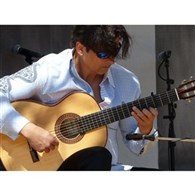
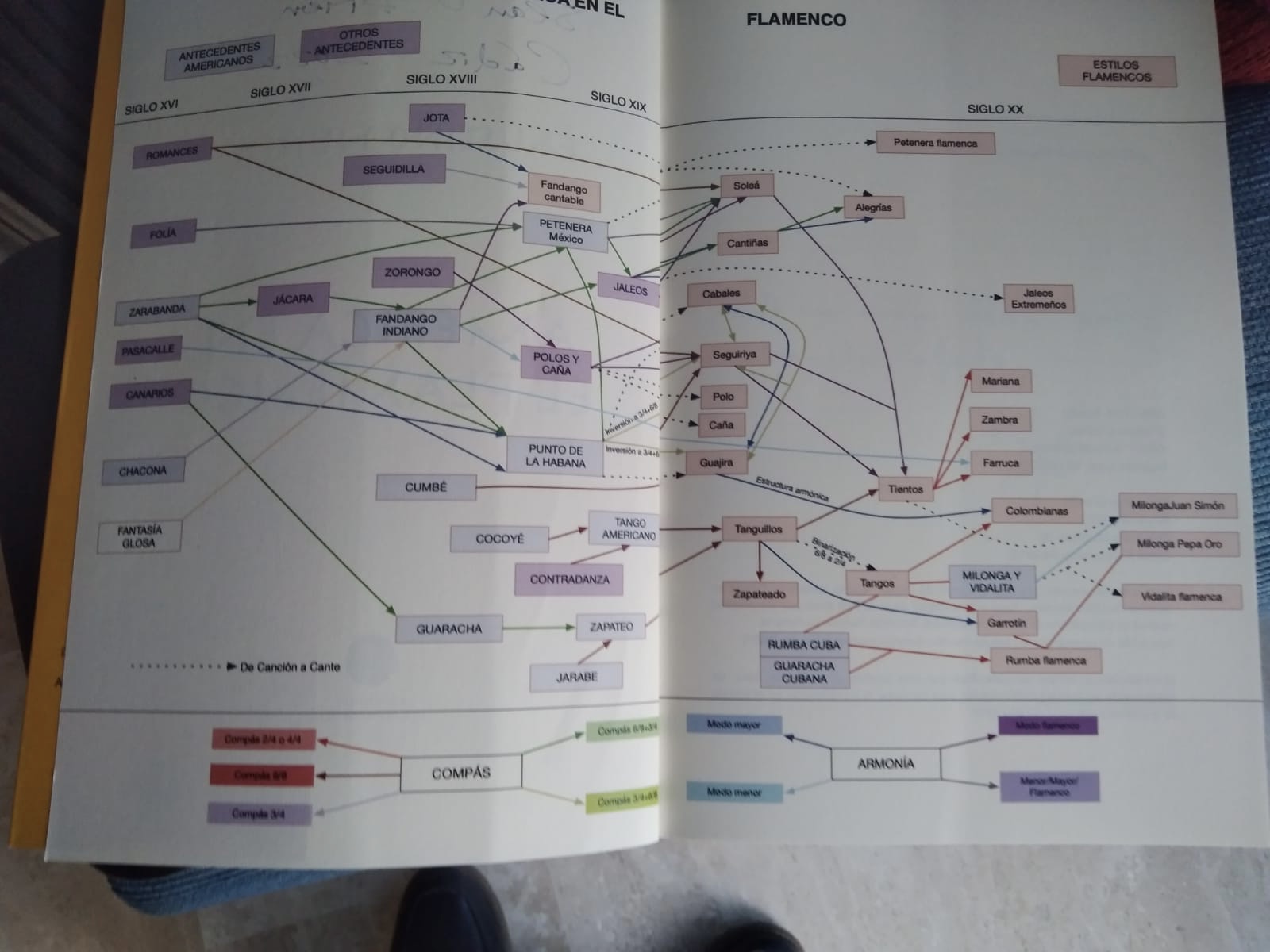

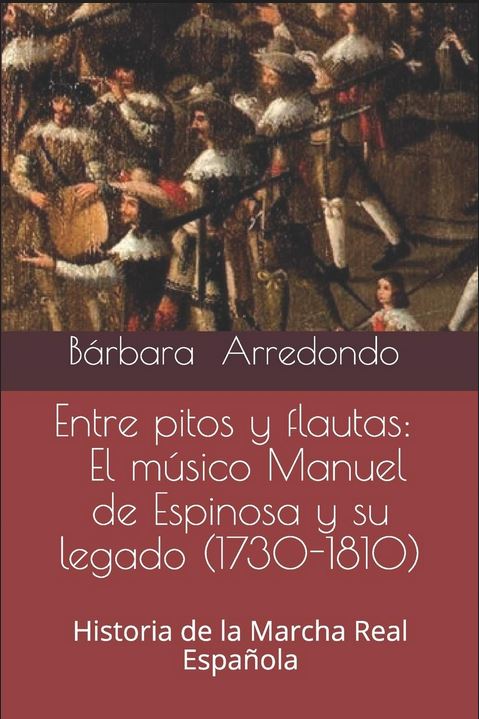
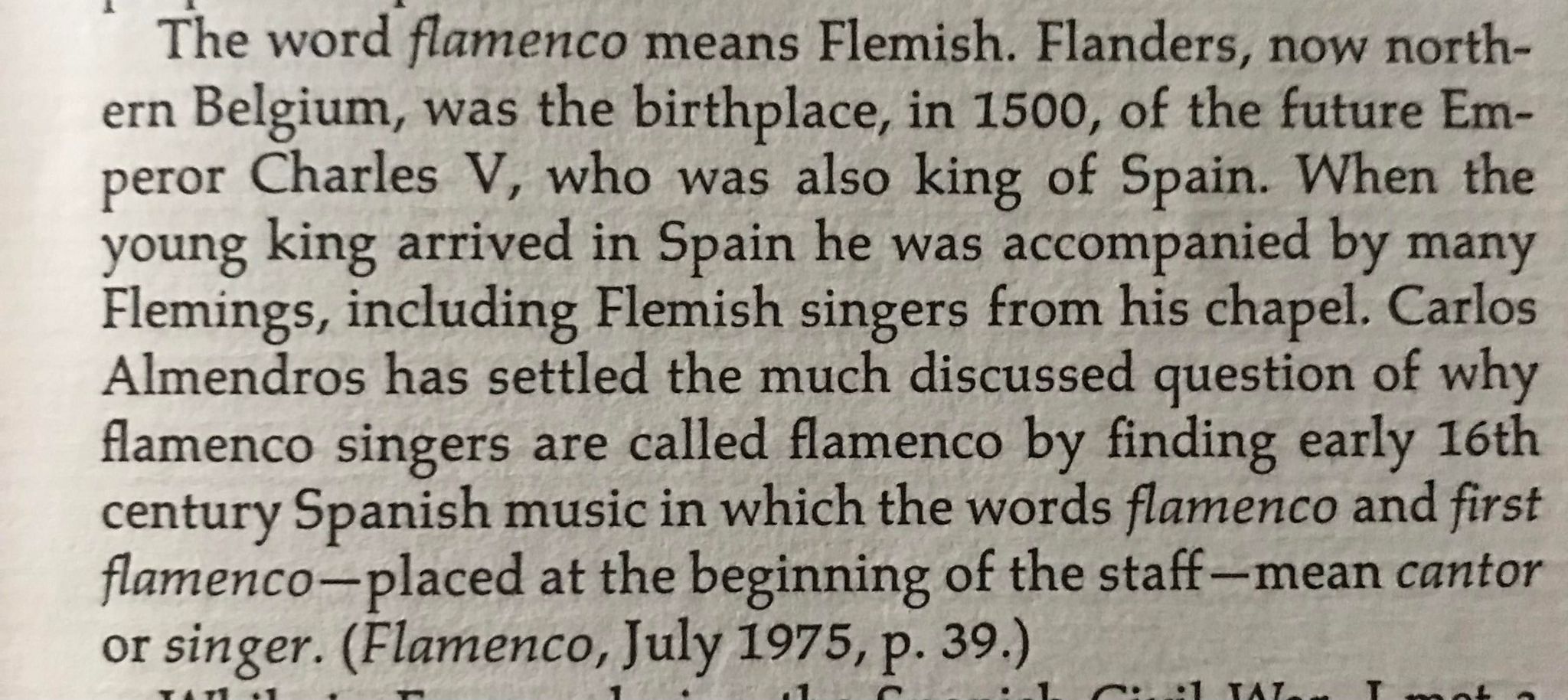
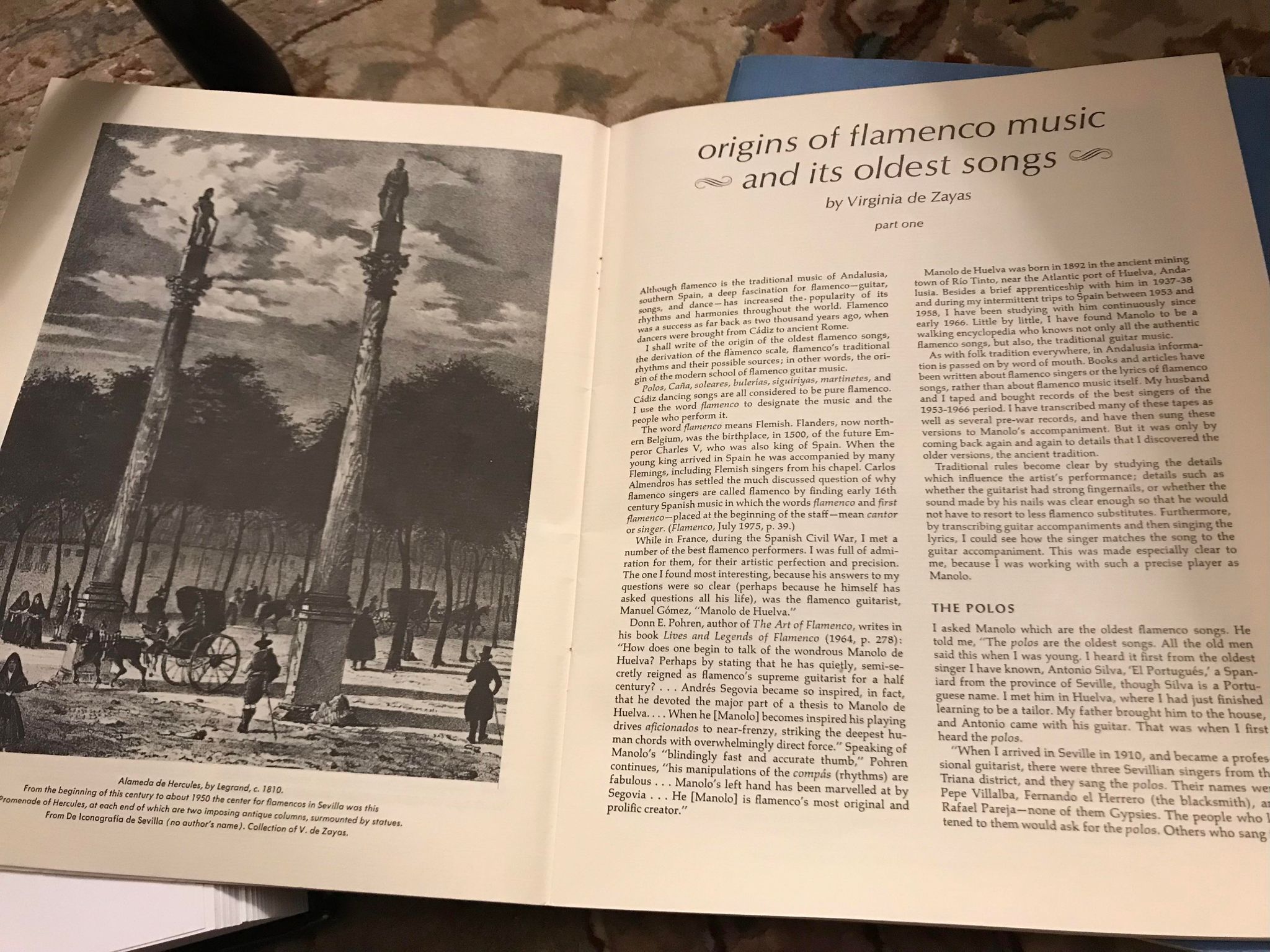
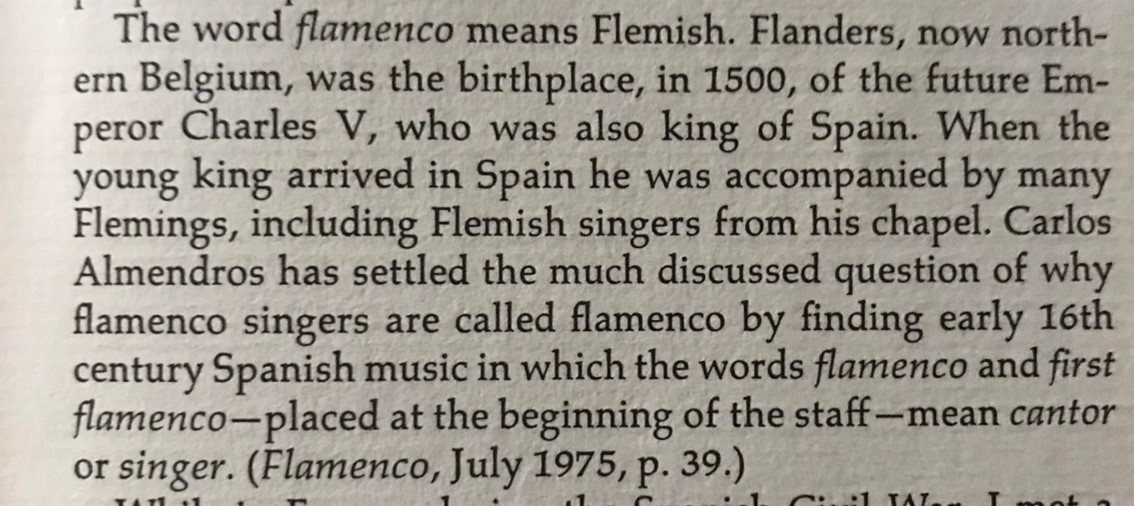

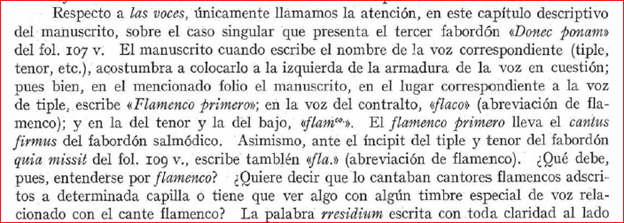
 Unless the owner refused to allow it? And it drives me up a wall that someone can let a priceless national treasure disintegrate, not take care of it (or get help with that), regardless of who owns it. Hope I am wrong but this is the impression I got from going through practically every mention of the manuscript that Google found.
Unless the owner refused to allow it? And it drives me up a wall that someone can let a priceless national treasure disintegrate, not take care of it (or get help with that), regardless of who owns it. Hope I am wrong but this is the impression I got from going through practically every mention of the manuscript that Google found. 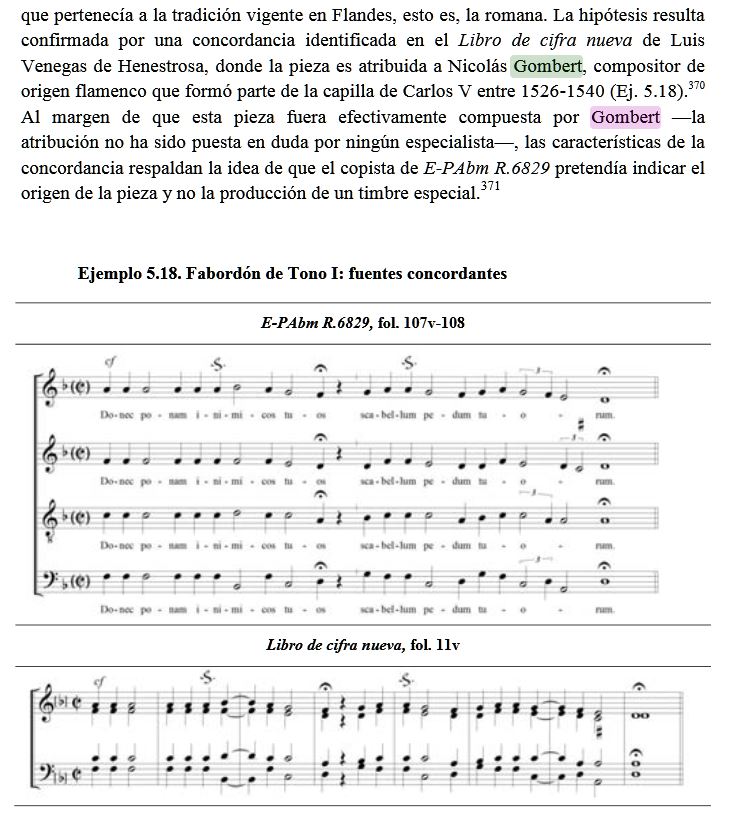

 New Messages
New Messages No New Messages
No New Messages Hot Topic w/ New Messages
Hot Topic w/ New Messages Hot Topic w/o New Messages
Hot Topic w/o New Messages Locked w/ New Messages
Locked w/ New Messages Locked w/o New Messages
Locked w/o New Messages Post New Thread
Post New Thread